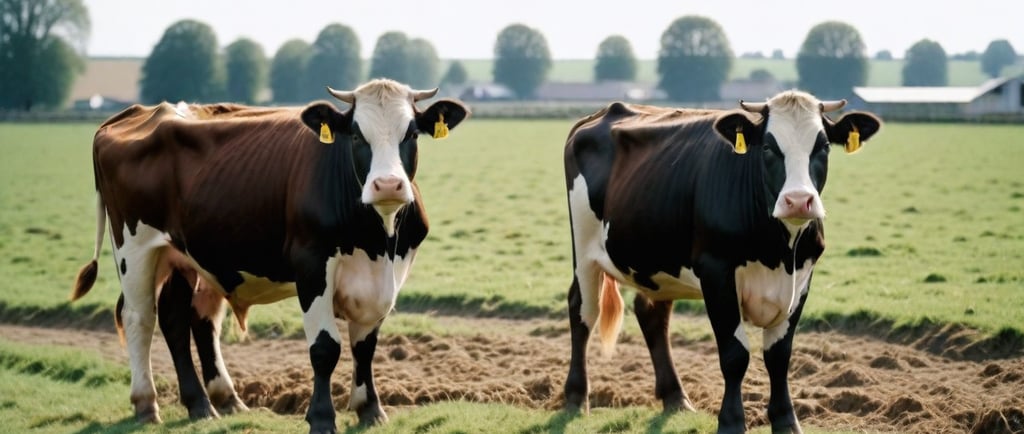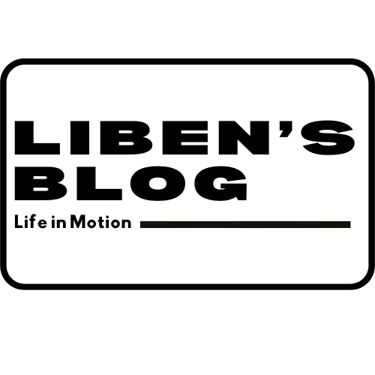Launching a Profitable Dairy Farm in Dimapur: A Complete Guide to Starting a 100-Cow Holstein-Frisian Operation
Discover the essentials of starting a successful dairy farm in Dimapur, Nagaland. This detailed guide covers everything from selecting high-yield Holstein-Frisian cows to implementing modern farming techniques. Learn about the financial and operational strategies that can help you achieve a profitable dairy business with a potential monthly net income of ₹22 lakhs. Ideal for entrepreneurs looking to tap into the booming dairy industry in Northeast India.
ORGANIC AGRO-LIVESTOCK FARMING
Dr. Emmanuel L Yanthan
4/18/20246 min read


Sample Business Plan for 100 Holstein-Frisian Dairy Farm
Comprehensive business plan for a 100 Holstein-Frisian dairy farm in rural Dimapur, Nagaland involves several critical components including market analysis, operational strategy, and financial planning. Here is a detailed plan for a large-scale dairy farming business:
Executive Summary
Sample Business Name: (Dimapur Dairy Ventures)
Business Type: Dairy Farming
Location: Rural Dimapur, Nagaland
Mission: To provide high-quality dairy products while employing sustainable farming practices to ensure profitability and environmental stewardship.
Vision: To become a leading provider of dairy products in the Northeast India region, known for quality and sustainability.
Objectives
To reach a milk production capacity of 2,000 liters per day by the end of the first year.
Achieve break-even point within the first two years of operation.
Develop a local distribution network reaching local markets and extending to major cities in Northeast India.
Business Description
Dimapur Dairy Ventures aims to operate a 100-cow dairy farm using high-yielding Holstein-Friesian cows, focusing on producing high-quality fresh milk and other dairy products. The farm will implement modern dairy farming techniques including automated milking and feeding systems to maximize efficiency and productivity.
Market Analysis
Market Segmentation: The primary market includes local households, tea shops, hotels, and restaurants within Dimapur and its surrounding areas. A secondary market involves expanding to larger urban centers in Northeast India.
Target Market: Middle to upper-class families looking for high-quality fresh milk and dairy products.
Competitors: Local dairy farmers, regional dairy farms, and national dairy brands.
SWOT Analysis:
Strengths: Use of high-yield Holstein-Frisian breed, modern technology, experienced management.
Weaknesses: High initial capital investment, dependency on market acceptance.
Opportunities: Growing demand for quality dairy products, potential for expansion into organic products.
Threats: Fluctuating feed costs, potential diseases affecting livestock.
Products and Services
Products: Pasteurized milk, cheese, butter, yogurt.
Services: Bulk sales to businesses, direct home deliveries.
Operational Plan
Farm Layout: The farm will have a free-stall barn design allowing cows freedom of movement, and easy access to food and water to reduce stress and improve health.
Animal Health Care: Regular veterinary check-ups and vaccinations to maintain high health standards and productivity.
Feeding: Locally sourced feeds supplemented with vitamins and minerals for optimal animal health.
Milking: Twice daily milking using automated milking systems to ensure consistency and efficiency.
Management and Organization
Owner/Manager: Responsible for overall management and decision-making.
Veterinarian: On-call, responsible for animal health.
Farm Hands: 5 full-time employees responsible for feeding, milking, and general maintenance.
Marketing and Sales Strategy
Marketing: Local advertisements, social media campaigns, participation in local fairs and markets.
Sales Strategy: Direct sales to consumers (home delivery service), wholesale to local businesses.
Financial Plan
Start-Up Costs:
Land: ₹50 lakhs
Construction: ₹60 lakhs
Equipment: ₹40 lakhs
Cows (100 x ₹60,000): ₹60 lakhs
Initial Feed and Supplies: ₹10 lakhs
Total: ₹220 lakhs
Revenue Streams:
Milk sales: 2,000 liters/day at ₹50/liter
Product sales (cheese, butter, yogurt): Projected ₹30 lakhs/month by end of Year 1
Monthly Expenses:
Feed: ₹5 lakhs
Salaries: ₹2 lakhs
Maintenance and Misc: ₹1 lakh
Total: ₹8 lakhs
Projected Profit:
Gross Revenue: ₹30 lakhs/month
Expenses: ₹8 lakhs/month
Net Income: ₹22 lakhs/month (after reaching full capacity)
Funding Request: Seeking a loan of ₹220 lakhs to cover start-up costs, to be repaid over 10 years with an interest rate of 10% per annum.
Conclusion
Dimapur Dairy Ventures is poised to tap into the growing demand for high-quality dairy products in Nagaland and the broader Northeast India region. With experienced management, advanced technology, and a strong business model, the farm expects to achieve sustainable profitability and make a positive impact on the local community and economy.
FEED MANAGEMENT
A well-designed fodder farming plan is critical for sustaining a 100-cow dairy farm, especially when focusing on grass feeding using a variety of plants like Taiwan giant grass, American 5g Napier, Drumstick tree (Moringa), Chaular (Amaranthus), and Berseem. This plan will outline the tonnage of fodder required, the farming area needed, and the operational costs involved.
Fodder Requirements
To determine the exact fodder requirements, it's essential to know that a dairy cow eats about 3% of its body weight in dry matter each day. For high-yielding Holstein-Friesian cows, which can weigh around 600 kg, this would mean approximately 18 kg of dry matter per day per cow.
Assuming 100 cows, the total daily requirement would be:
100 cows×18 kg/day=1800 kg of dry matter/day100 cows×18 kg/day=1800 kg of dry matter/day
Fodder Types and Yields
(1 hectare = 2.47 acres)
1. Taiwan Giant Grass
Yield: About 100 tonnes/ha/year in good conditions.
Area: This grass will be used as a staple; planning for half of the dry matter from this source:
Needed: 900 kg/day
Daily per ha yield: 100,000 kg365 days≈274 kg/day/ha365 days100,000 kg≈274 kg/day/ha
Area required: 900274≈3.3 ha274900≈3.3 ha
2. American 5g Napier
Yield: Approximately 80 tonnes/ha/year.
Area: Secondary staple; planning for a quarter of the dry matter:
Needed: 450 kg/day
Daily per ha yield: 80,000 kg365 days≈219 kg/day/ha365 days80,000 kg≈219 kg/day/ha
Area required: 450219≈2.1 ha219450≈2.1 ha
3. Drumstick Tree (Moringa)
Yield: Leaves can be plucked up to six times a year; each plucking yields about 6 tonnes/ha.
Area: High nutritional value but lower mass; used as a supplement:
Needed: 150 kg/day
Daily per ha yield (annual): 6×6,000365≈98 kg/day/ha3656×6,000≈98 kg/day/ha
Area required: 15098≈1.5 ha98150≈1.5 ha
4. Chaular (Amaranthus)
Yield: About 40 tonnes/ha/year.
Area: Used as a supplement:
Needed: 150 kg/day
Daily per ha yield: 40,000365≈110 kg/day/ha36540,000≈110 kg/day/ha
Area required: 150110≈1.4 ha110150≈1.4 ha
5. Berseem
Yield: Approximately 70 tonnes/ha/year.
Area: Used as a supplement:
Needed: 150 kg/day
Daily per ha yield: 70,000365≈192 kg/day/ha36570,000≈192 kg/day/ha
Area required: 150192≈0.8 ha192150≈0.8 ha
Total Area and Operational Costs
Total Area Required: 3.3+2.1+1.5+1.4+0.8=9.1 hectares3.3+2.1+1.5+1.4+0.8=9.1 hectares
Operational Costs:
Seed and planting material: ₹10,000 per hectare
Fertilizers and pesticides: ₹15,000 per hectare annually
Watering and irrigation: ₹5,000 per hectare annually
Harvesting and maintenance: ₹10,000 per hectare annually
Total Annual Cost: Total cost=(10,000+15,000+5,000+10,000)×9.1=₹366,400 per yearTotal cost=(10,000+15,000+5,000+10,000)×9.1=₹366,400 per year
Monthly Cost: Monthly cost=₹366,40012≈₹30,533Monthly cost=12₹366,400≈₹30,533
This fodder plan ensures a diverse diet for the cows, enhancing their health and milk production, while also being sustainable and feasible within the local agricultural context of Dimapur, Nagaland. This strategic approach helps in minimizing feed costs and maximizing nutritional output, crucial for the profitability of the dairy farm.
Essential Farm Machinery List
Implementing mechanization in the fodder production for a dairy farm can significantly reduce labor costs and increase efficiency. Here’s a list of essential farm machinery required to manage a 9.1-hectare fodder farm efficiently, with the aim of supporting a 100-cow dairy operation:
1. Tractor
Purpose: Primary workhorse for various tasks including plowing, tilling, and pulling heavy loads.
Model Suggestion: A medium-power (45-75 hp) tractor is suitable for a farm of this size.
2. Rotary Tiller
Purpose: Attached to a tractor, used for mechanical soil tillage, especially effective in preparing seedbeds quickly.
Model Suggestion: Suitable width depending on tractor power to ensure compatibility and efficient coverage.
3. Disc Harrow
Purpose: Used for soil breaking, crop residue chopping, and mixing in topsoil which is essential after tilling.
Model Suggestion: Compatible with the tractor, around 1.5-2.0 meters wide.
4. Seed Drill
Purpose: For sowing seeds at the correct depth and distance from each other, which increases seed germination rates and crop density.
Model Suggestion: A model that matches the tractor width and can handle the various seed types used on the farm.
5. Fertilizer Spreader
Purpose: Evenly distributes fertilizer over cultivated land, which is crucial for the growth of high-yield fodder crops.
Model Suggestion: Choose a model that can also handle manure spreading to maximize utility.
6. Sprayer
Purpose: For applying liquid fertilizers, herbicides, and pesticides. Essential for maintaining crop health and yield.
Model Suggestion: Both backpack models for small areas and tractor-mounted models for larger fields.
7. Mower
Purpose: Cuts the fodder crops once they reach the desired height, which is crucial for ensuring high nutritional content and regrowth capability.
Model Suggestion: A tractor-operated mower that can handle the farm's terrain.
8. Baler
Purpose: Compacts cut fodder into bales for ease of handling, transport, and storage.
Model Suggestion: Round or square baler, depending on storage and handling preferences.
9. Forage Harvester
Purpose: Cuts and chops silage crops, and prepares them for compacting and fermentation.
Model Suggestion: A tractor-mounted forage harvester is essential for large-scale silage production.
10. Loader
Purpose: Helps in loading and unloading heavy materials like fodder bales and manure.
Model Suggestion: Front-end loader attachment for the tractor.
11. Irrigation Equipment
Purpose: Ensures adequate water supply across the farm, particularly critical during dry spells.
Model Suggestion: Drip or sprinkler irrigation systems, depending on local water availability and farm layout.
Investment and Operational Considerations
Capital Investment: Initial investment in these machines can be significant but is justified by the labor savings and increased production efficiency.
Maintenance: Regular maintenance is required to keep machinery in good working condition and prevent breakdowns, which can lead to costly downtime.
Training: Laborers will need training to operate these machines efficiently and safely, which could incur some initial costs but is crucial for maximizing the benefits of mechanization.
By utilizing these machines, a dairy farm can greatly improve its operational efficiency, reduce dependency on manual labor, and potentially increase the overall profitability of the business.
